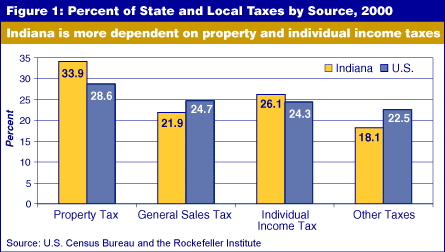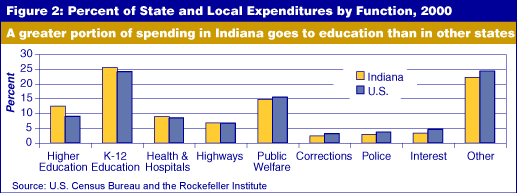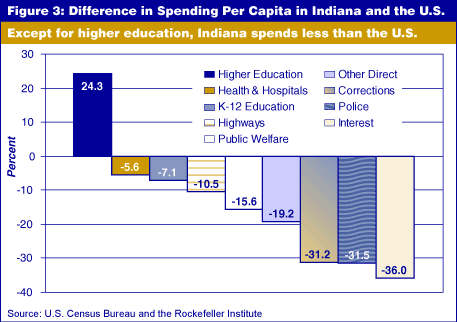Taxing Hoosiers
Are Indiana’s taxes too high? Do we spend enough on public services? Those are two persistent questions that cannot be answered.
The best we can do is compare ourselves to other states. Even then, the comparisons are not necessarily meaningful. A few simple examples reveal the futility of seeking answers to these complex questions.
Do we spend enough on snow removal? How can we compare ourselves to Florida on such a question? They have virtually no snow and the snow they get melts very quickly when it does fall. Hence, they have no need to spend any money on snow removal. Indiana does have heavy snows and its citizens require, even demand, that the snow not be left to melt on its own.
How should we compare Indiana to other states? National data gives big states like California more weight than if we used an average. But averages of all states let the less-populated states (North and South Dakota, for example) have a greater bearing on the results.
What is the proper measure of taxation and spending? The most common approach is to use either tax collections and expenditures per capita or as a percent of personal income as the basis for comparison. But a state with fewer children will show lower spending by either measure because they do not have as many students to educate. And neither measure tells us anything about the distribution of taxes and spending in relation to business or in relation to the rich and the poor.
What the Data Tell Us
Given all of these warnings, we can get a generalized picture of taxation and government spending in Indiana. These data are for the fiscal year 2000, as compiled by the U.S. Census Bureau and organized by the Rockefeller Institute.
Indiana derived 82.6 percent of its state and local revenues from its own sources and 17.4 percent from the federal government. At the national level, the figures were only slightly different: 81.1 percent and 18.9 percent, respectively. Why? Indiana has fewer federally supported activities. We do not have as many miles of road as geographically larger states. We have fewer military bases and no Indian reservations.
Of the revenue Indiana derived from its own sources, 66.6 percent came from taxes compared to 69.8 percent nationally. Indiana uses various charges and miscellaneous fees more often than other states. Figure 1 shows that Indiana is more dependent on property and individual income taxes than other states.

Tax revenues in Indiana amounted to $2,707 per person, while nationally the figure was $3,126. This means that the average Hoosier paid $419 or 13.4 percent less in state and local taxes per person than did the average American. For Hoosiers, state and local taxes were 10.6 percent of personal income compared to 11.2 percent across the nation. Did we get away cheaply or are we just cheap?
How We Spend Money
As Figure 2 shows, a greater portion of spending in Indiana goes to education than in other states. But that does not mean we spend more than other states. In every area of governmental activity other than higher education, Indiana spends less per capita than does the nation (see Figure 3). Should we cut back on higher education to meet the national standard in order to raise our spending in other areas?


One way to answer that is to look at our overall level of spending. State and local government expenditures in Indiana are equivalent to 18.6 percent of our personal income. Nationally, the figure is 19.3 percent. Hence, to be even with the nation, which may be under-investing in the public sector, we could spend another 0.7 percent of our personal income on government services. This would have amounted to an increase of $1.1 billion in spending in fiscal year 2000 … a small price to pay to achieve mediocrity.
Morton J. Marcus
Director Emeritus, Indiana Business Research Center,
Kelley School of Business, Indiana University
